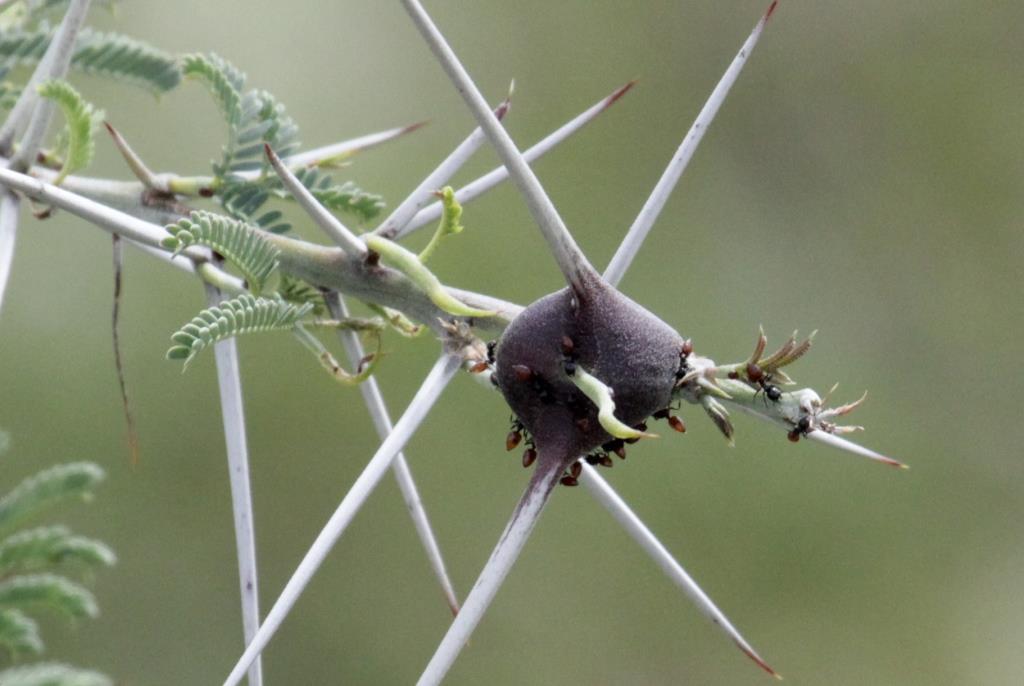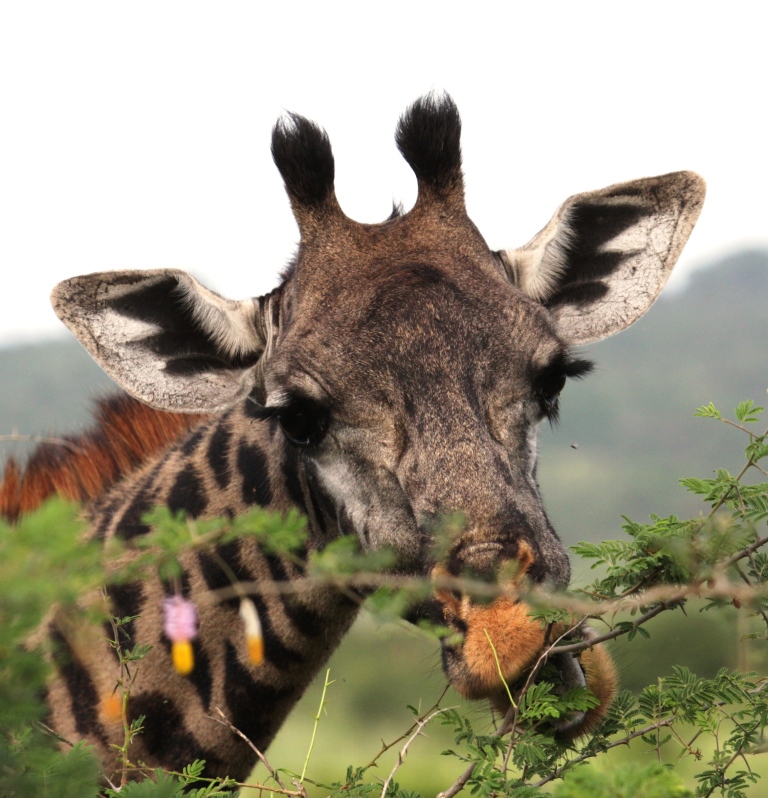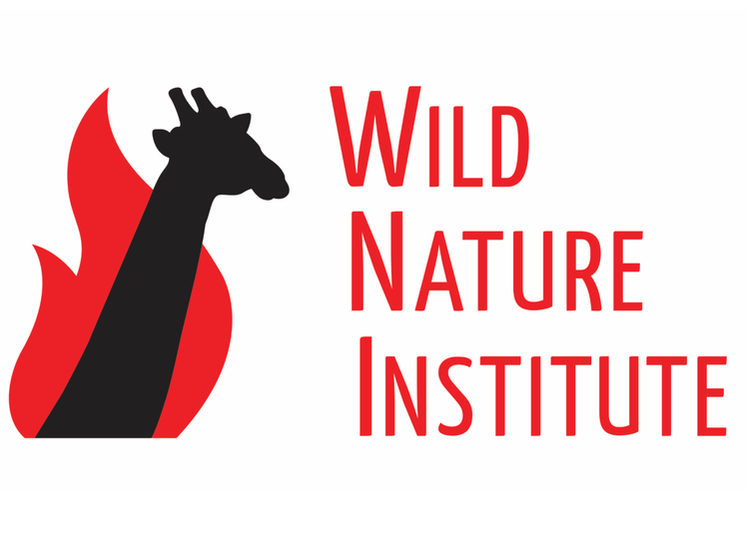|
Mutualistic relationships between species--where each benefits from the other--are critical to ecological function and the maintenance of biological diversity. One interesting example of mutualism in the east African savanna is the relationship between the whistling-thorn Acacia tree (Acacia drepanolobium), large herbivores such as giraffes, and ant communities that live on the trees. Whistling-thorn Acacias reward ants that defend the trees from browsing herbivores. These trees produce hollow swollen thorns called "domatia" that house ants, and secrete nectar at the base of the leaves. There are four species of ants that compete for possession of host trees, but they vary in their defense of the tree against herbivores and other ants, and in their use of the tree's rewards of domatia and nectar. The most aggressive ant defender of the tree, Crematogaster mimosae, relies completely on domatia, whereas the less-aggressive ant defender C. sjostedti nests in cavities excavated by wood-boring beetles. A fascinating long-term study was conducted in Kenya examining the complex interactions between large herbivores, ant communities, and whistling-thorn Acacia. The researchers excluded some areas from herbivores, and then measured ant community dynamics and tree growth and survival. Their research, published in the journal Science (Palmer et al. 2008), found that when large herbivores were excluded, the trees produced less nectar, resulting in smaller colony sizes of their most active defender, the nectar-dependent C. mimosae. As numbers of C. mimosae decreased, the numbers of their competitor C. sjostedti increased -- but these ants actively facilitated attack of host trees by wood-boring beetles to make nesting cavities. The result? A dramatic reduction in growth and survival of the Acacia trees due to the attacks by wood-boring beetles. Counter-intuitively, trees in areas without large herbivores like giraffes ultimately suffered twice the mortality of trees in areas with large herbivores! The authors noted: "The large herbivores typical of African savannas have driven the evolution and maintenance of a widespread ant-Acacia mutualism and ... their experimentally simulated extinction rapidly tips the scales away from mutualism and toward a suite of antagonistic behaviors by the interacting species ... In the absence of large herbivores, reduction in host-tree rewards to ant associates results in a breakdown in this mutualism, which has strong negative consequences for Acacia growth and survival. Ongoing anthropogenic loss of large herbivores throughout Africa may therefore have strong and unanticipated consequences for the broader communities in which these herbivores occur." Yet another reason to save giraffes! Nature's web of life has evolved over millions of years, and when we mess with this delicate and complicated balance, we create serious adverse consequences for biological diversity.
0 Comments
Your comment will be posted after it is approved.
Leave a Reply. |
Science News and Updates From the Field from Wild Nature Institute.
All Photos on This Blog are Available as Frame-worthy Prints to Thank Our Generous Donors.
Email Us for Details of this Offer. Archives
July 2024
|
|
Mailing Address:
Wild Nature Institute PO Box 44 Weaverville, NC 28787 Phone: +1 415 763 0348 Email: [email protected] |
|



 RSS Feed
RSS Feed
